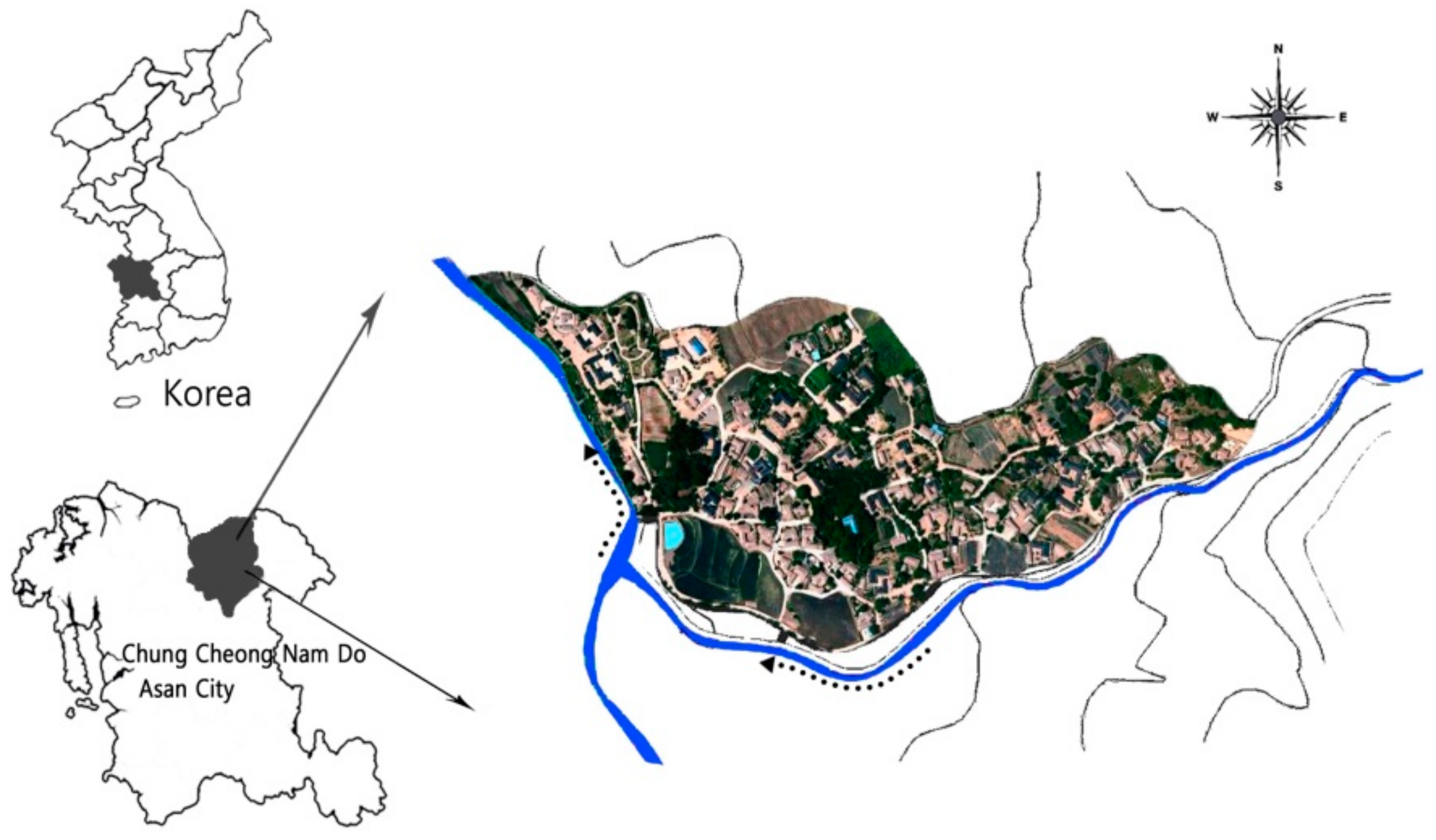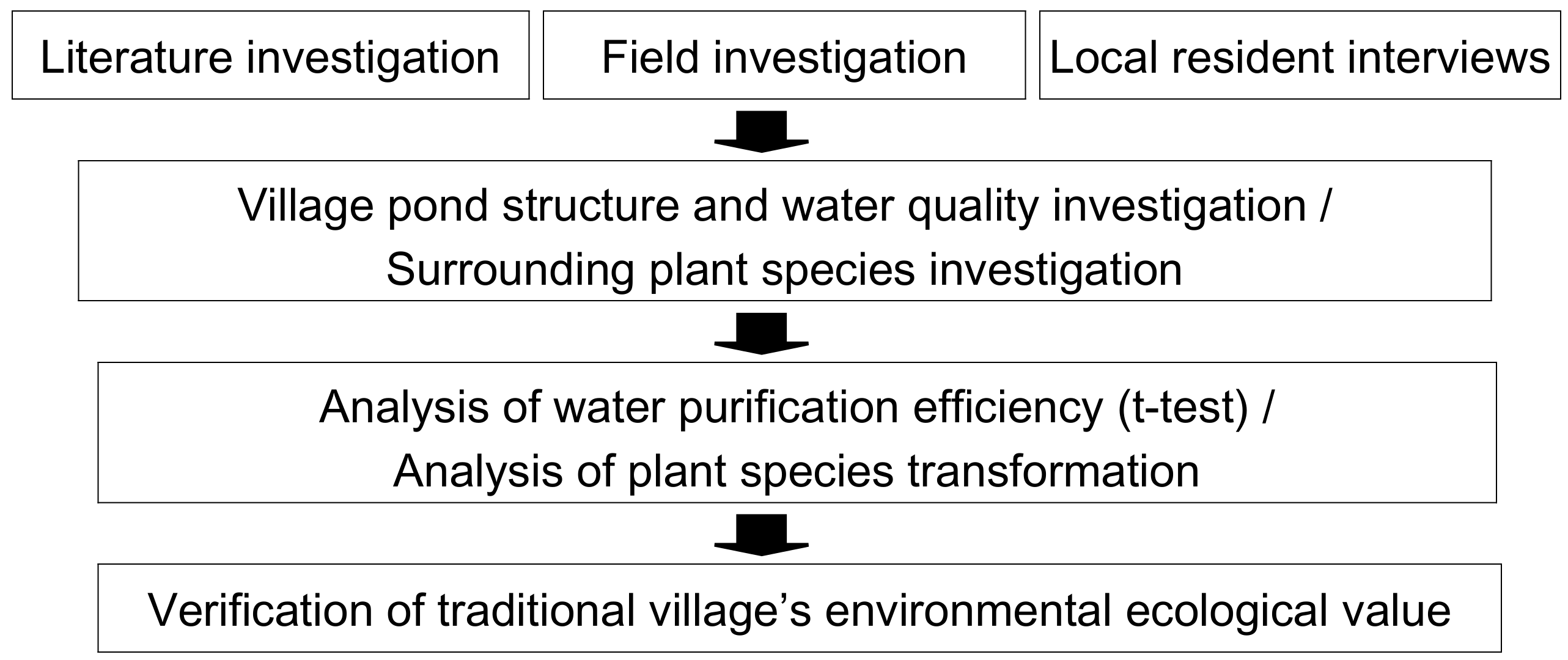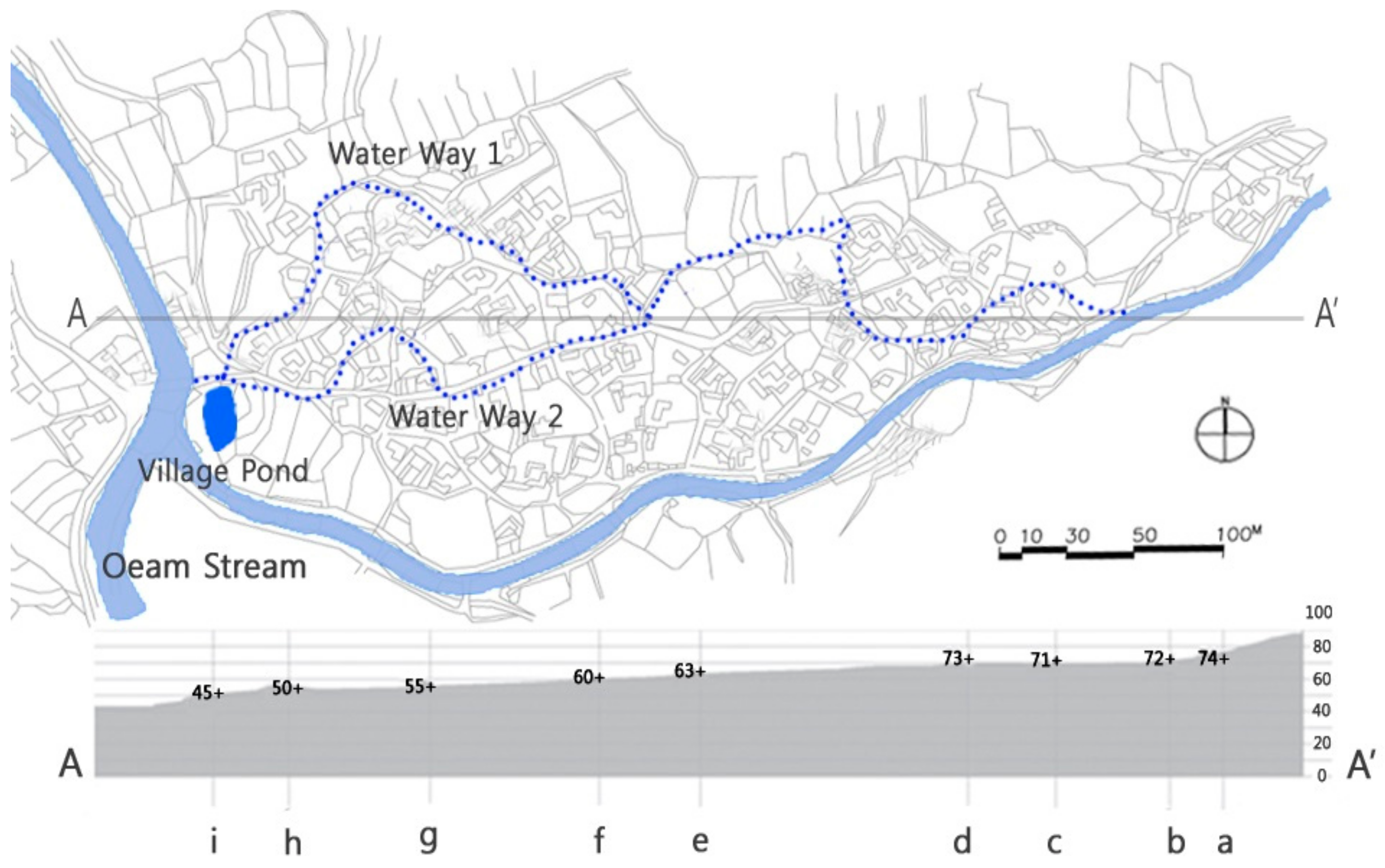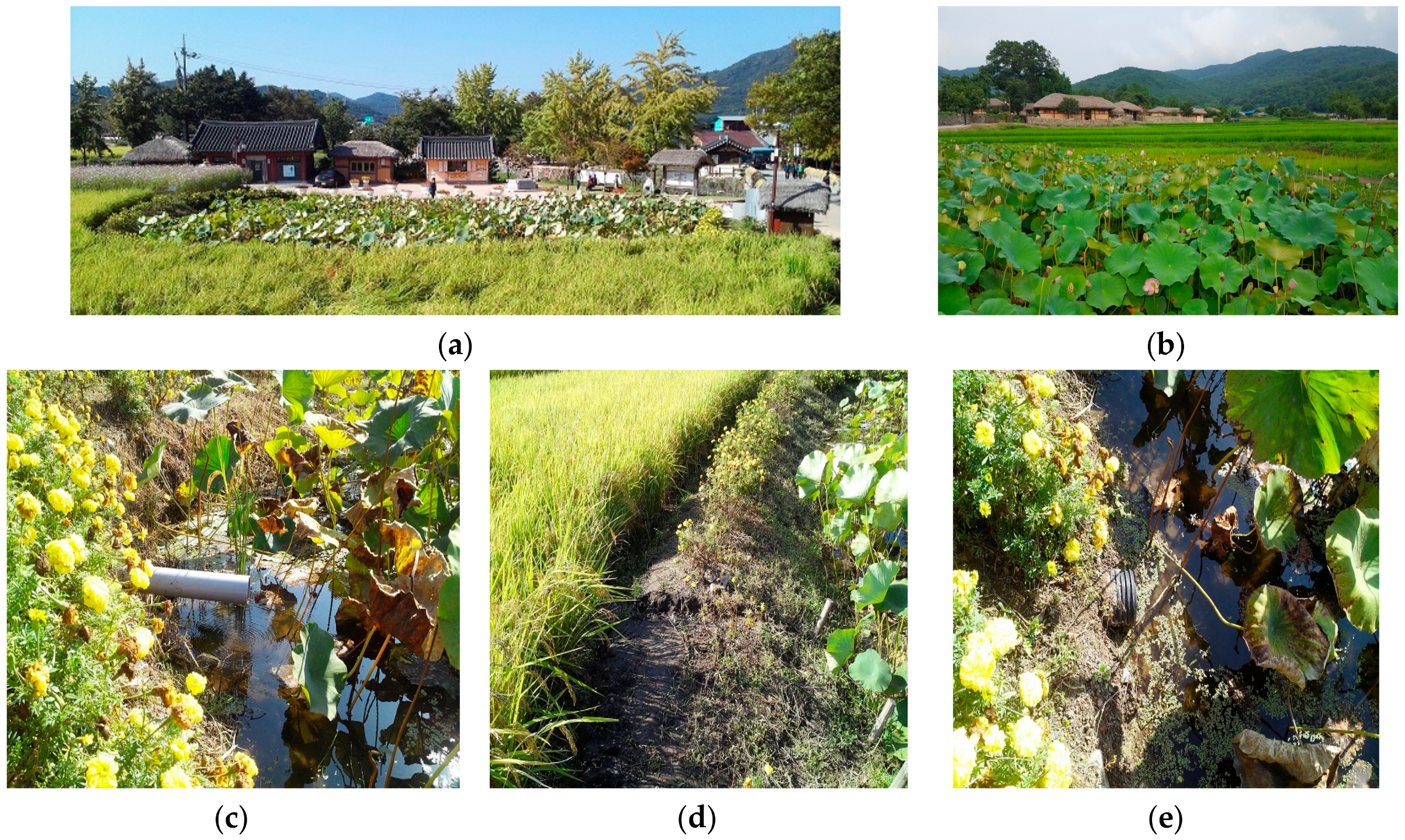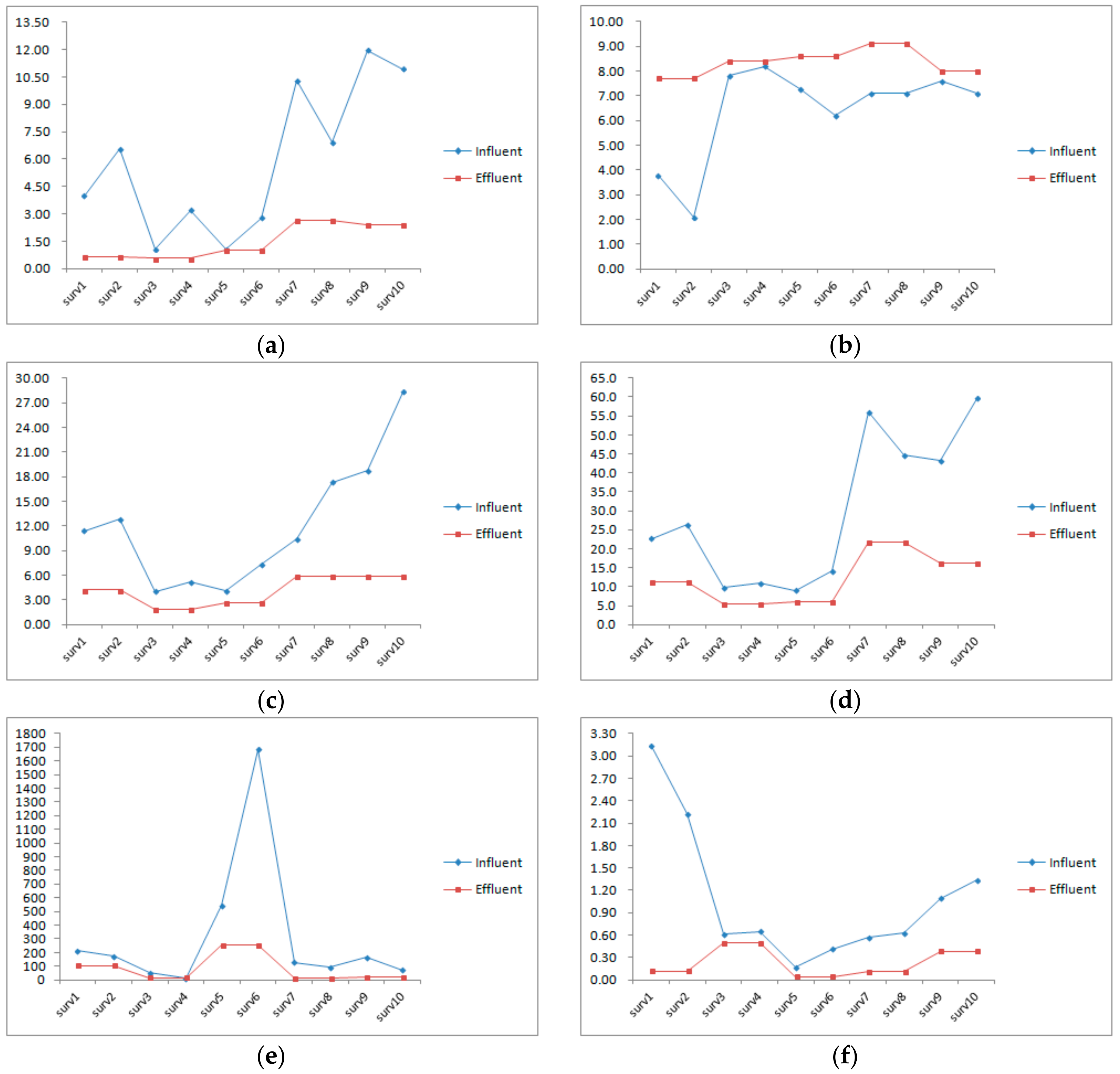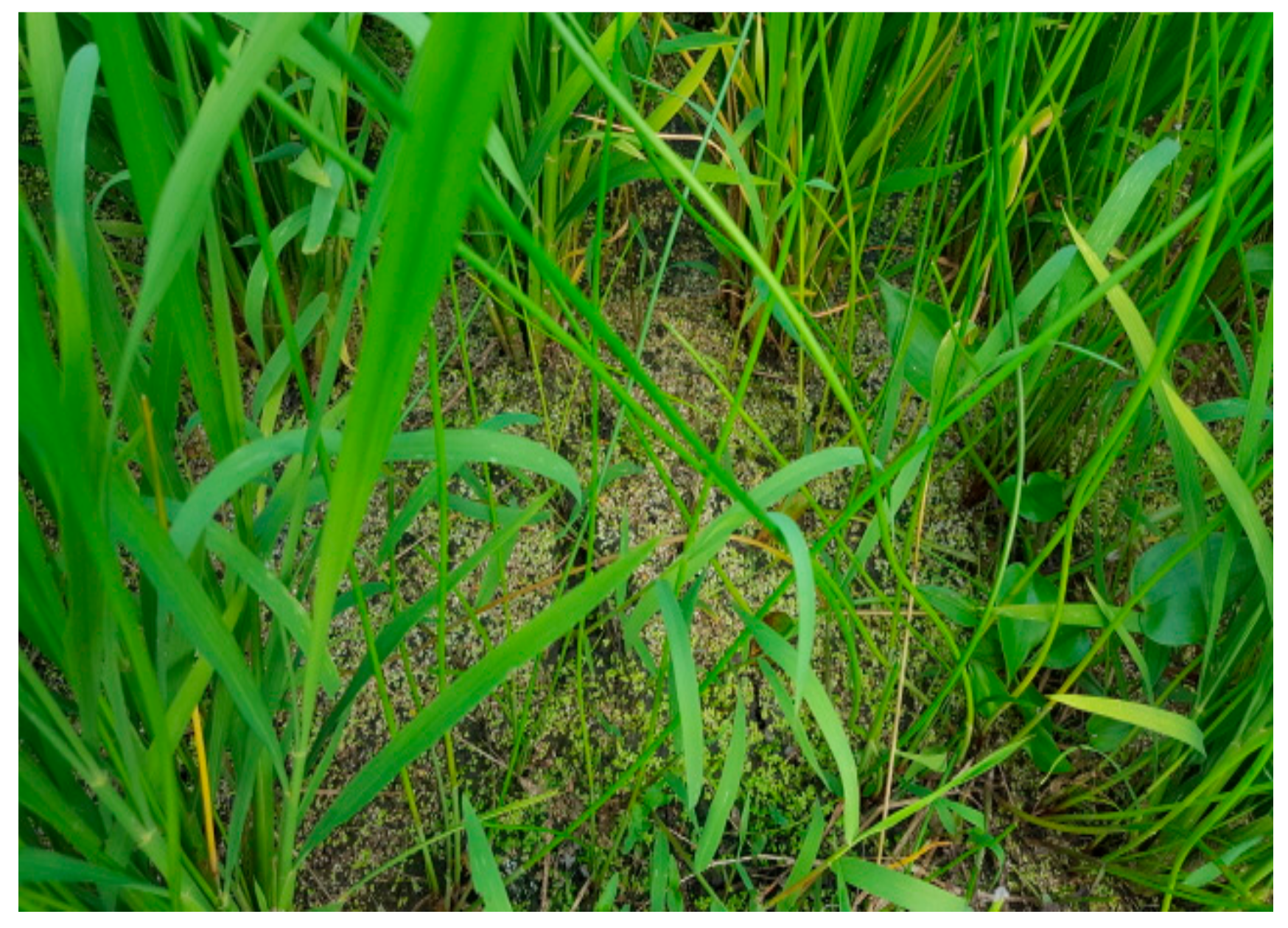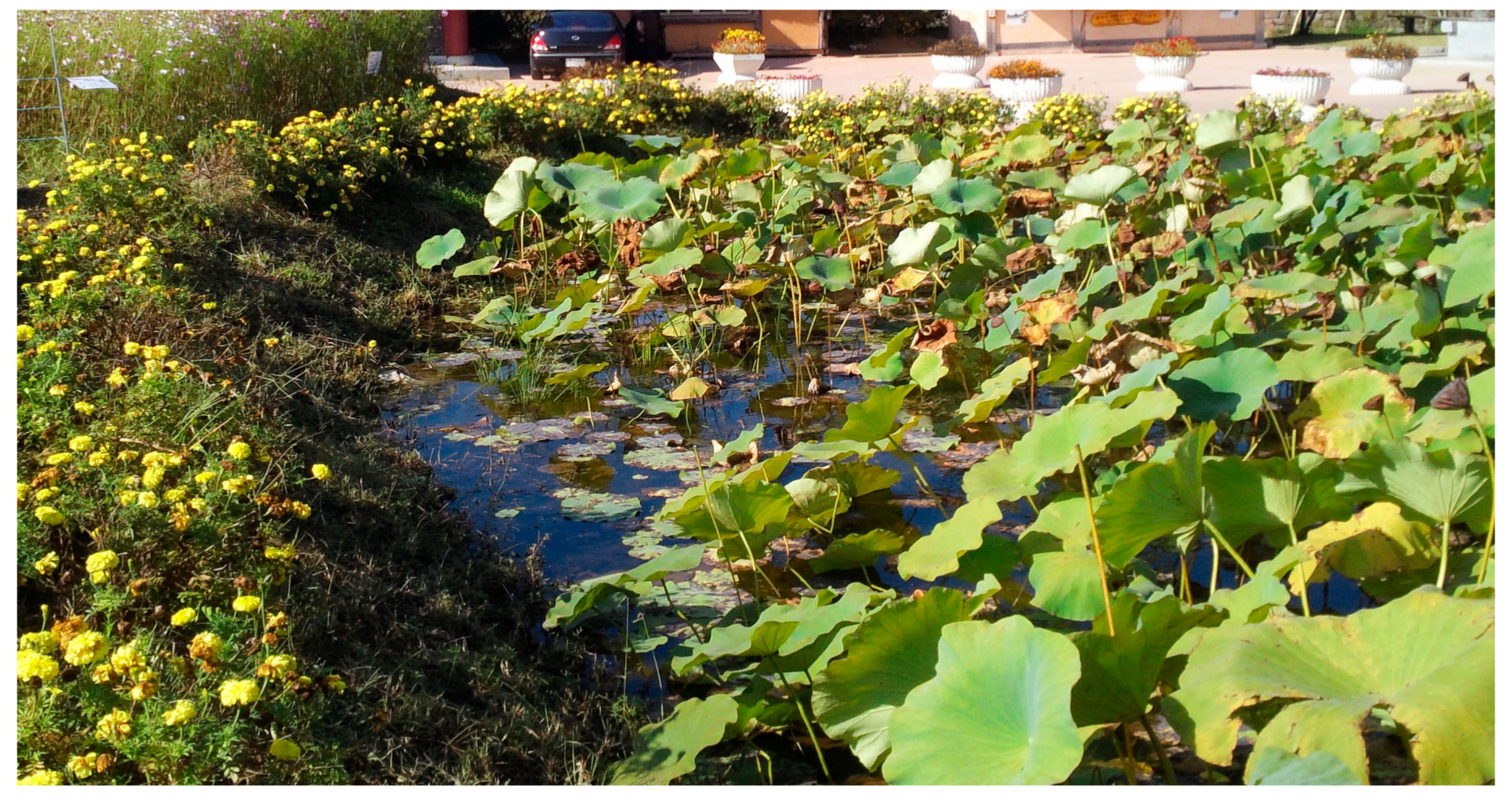1. Introduction
Today, sustainable city development is a significant objective for urban environments. UN-Habitat has been discussing the importance of well-planned, well-governed, and efficient cities and other human settlements, with adequate housing, infrastructure, and universal access to employment and basic services such as water, energy, and sanitation [
1]. The United Nations Centre for Human Settlements (UNCHS) has also established planning index and criteria to be practiced globally, and many countries around the world have strived to construct sustainable settlements in accordance with their background and circumstances [
2]. Korea is also responding actively to environmental issues while the UN is escalating its efforts to achieve harmony between environment and development.
Korea is deeply interested in methods to minimize the influence on the environment when restoring ecosystems destroyed from industrialization and urbanization, and by new development. In particular, the Ministry of Environment, one of the branches of the central government, engaged in a 10-year national project to “[create] ecological streams” from 2006 to 2015, and the Ministry of Land invested a large budget in creating and restoring environmentally friendly streams that allow humans to coexist with the environment over the five-year period between 2007 and 2011 [
3]. These efforts were made to improve quality of life by enhancing the comfort factor of the physical environment, species diversity, and the soundness of the aquatic ecosystems. This is because water influences the core aspects of human life. Throughout the ecological restoration of the aquatic ecosystems, traditional villages would have undertaken efforts to actively utilize surrounding environmental features and adapt to them, as they were formed before human-focused water use was maximized. We focus on the fact that traditional villages represent a concentration of wisdom as the foundation of living that is suitable for these specific lands over a long period of time.
Korean residential development planning has a history of employing traditional ancestral techniques (conventionally termed as knowledge systems) [
4] as a means of ensuring sustainability and environmental integrity [
2,
5]. The majority of traditional Korean villages emerged autonomously, and the people who lived in them understood how to adapt to the natural environment [
6]. It is fundamentally necessary to examine the evolution of water treatment techniques used in farming and daily life, because these techniques were developed as solutions to social needs [
7]. The water treatment system hardware in a traditional Korean village typically included a waterway within the village, a village
bangjuk (a water structure similar to a reservoir or pond), and a stream [
2]. This structure provided living and drinking water from the community spring or streams in front of homes [
8]. Domestic sewage from each household and rainwater would drain back into the river through the village waterway. Before sending water back into the river, this structure also gathered water in a designated location in the village and served as a multipurpose tool for reusing the water. In this type of water treatment system, if the volume of water in the waterway surpassed a fixed quantity after being recycled, the majority of it would follow the village or agricultural waterway and connect to a stream in front of the village. All of the water from small basins in the village would pass through the village waterway and gather at a low point in the village before exiting the village [
3].
As Korea underwent modernization, the village bangjuk, which was an auxiliary measure to provide urgent agricultural water during the dry season, was reclaimed for water resource development, land-use change, and environmental improvement. Its traces vanished to the point that even the term “bangjuk” [
9] fell out of use. In addition, as open village waterways reverted to past models, they were buried in the ground. However, village bangjuks and the waterways of traditional villages are now being restored or newly built as new light is shed on their value in increasing the ecological integrity of villages. It is important to focus on Oeam-ri Village, located in Songak-myun, Asan City, Chungcheongnam-do, which still uses some elements of its traditional water infrastructure. This village was designated a Traditional Village under the Cultural Heritage Protection Act on 7 January 2000, and was also designated a Folk Village as an Important Folklore Material (No. 236) [
5]. Oeam-ri village features a man-made waterway that intersects the village and the upstream houses, which creates a water space that is rare in other Folk Villages [
8]. The water is sourced from a small dam on the stream that flows to the south of the village before crossing through its center. The water naturally flows downstream, maintaining a smooth slope. As the water flows near the houses upstream and returns towards the houses downstream, it appears that there would have been interactions within the village community [
3].
The pond built at the entrance of Oeam village, the target area of this study, was completed in 2013 through the efforts of a village conservation association. It would be inaccurate to refer to Oeam’s pond as a traditional village bangjuk, which would collect all effluent water, including domestic sewage; however, it can reasonably be described as a type of village bangjuk, utilizing the village’s topography, gathering farmland effluent water around residential areas, and sending it out of the village after storing it for a designated period of time. In Oeam’s water treatment structure, the bangjuk’s influent water is maintained as a surplus water resource for farmland, and when the water surpasses a fixed level, it naturally flows into the village waterway before entering the Oeam River. Village locals refer to this as a “yeongji” (a pond where lotuses are planted); however, in this paper, the target area is referred to simply as the “village pond”.
Research on traditional Korean villages such as Suncheon’s Naganeupseong Village [
2,
10], Hwasun’s Wolgok Village [
11], Changpyeong’s Samjinae Village [
12], Asan’s Oeam-ri Village [
2,
5,
7,
8,
13], and Kimcheon’s Wonto Village [
14] has provided observations on water cycling systems, low marshes and creeks for storm water infiltration, and plant purification systems based on system construction of water resources. This study, which was primarily conducted through observation, investigation, and a literature review, interprets water systems in traditional villages from physical perspectives, including humanistic perspectives and topography.
Water treatment is an important factor in ensuring the ecological integrity of a village’s water bodies and water systems [
15,
16,
17]. This study looked at Kyeongnam’s Wooponeup riverside cistern [
18], Chungnam’s Gongju Jaemin River [
19], and Kyeongi Province’s Kyeongan River [
20] to investigate and assess the value of water treatment. There has been substantial interest in research regarding farmland water quality issues associated with urbanization [
21], improvements [
22,
23,
24], and evaluation [
25,
26]. To improve water quality and the provision of ecosystem services in eutrophic urban ponds, research has been conducted to examine water quality improvements achieved by building floating treatment wetlands with plants from the Cyperus species, and other studies [
27] have shed light on the effects of water treatment in small-scale urban bangjuks using volcanic ash and yellow iris [
28].
Oeam Village, in southern Chungcheong Province, was used as a case study area in this research to assess the ecological value of water treatment systems in traditional Korean villages and address the following two questions: First, is it feasible to say that the occurrence of water treatment confirms the ecological value of village ponds? Second, what plant species changes confirm the ecological value? The answers to these questions are expected to be useful in research on the role of water treatment methods in the daily life of Korea’s traditional societies and in the formation of eco-villages for future generations.
4. Discussion
As shown in
Table 3, the measurement results demonstrated that the variation rates in water quality for each item were 75.33 percent for TN, 65.52 percent for BOD, 59.12 percent for COD, 74.14 percent for SS, and 78.85 percent for TP. An increase of 30.02 percent was observed for DO.
The water that flows into the village pond from the farmland stays for some time in the village ponds, where it is purified through filtration, adsorption, and denitrification of pollutants. Although results may vary depending on the survey purpose, survey timing, and season, the water purification function has been confirmed in a similar test for general detention ponds. In addition, as shown in
Table 6, TN, DO, BOD, and TP COD exhibited significant differences between water quality at the outflow point and at the inflow point. However, the differences were non-significant for SS.
The significant purification results should be understood in certain contexts, however. The water quality survey was conducted in May, June, July and August, when the highest crop growth was expected, and in October, when the growth was completed, to negotiate the timing of the application of fertilizer to farmland adjacent to the village pond—an assumed source of water pollution. It has been four years since the pond was built at the entry to Oeam Village, and it is in the process of stabilization. A statistical analysis based on a continuous water-quality survey will provide more reliable knowledge of whether the water treatment efficiency for each item is significant.
This study aimed to showcase the ecological diversity that has been achieved through ecological purification and various vegetation changes in the village ponds in Oeam Village. It was confirmed that water treatment was achieved by the ecological system of the ponds in the traditional village—distinct from potential alternatives such as mechanical devices. It was also confirmed that changes in vegetation had occurred after the village ponds were created. These elements are considered beneficial for improving the environmental-ecological values of traditional villages.
5. Conclusions
The pond at the village entrance, which was the focus of this study, takes the form of a village bangjuk, commonly seen in traditional Korean villages. It also reduces non-point pollution sources that flow in from farmlands in the upper portion of the village. The treatment efficiencies of TN, DO, BOD, COD and TP were 75.33, 30.02, 65.52, 59.12 and 78.85 percent, respectively, and were all found to be statistically significant except SS. The village pond acts as an environmental filter for pollution sources that arise in the farmland outside of the village.
The analysis of changes in plant species surrounding the village pond identified nine types of single-species gramineous plants that were cultivated in the farmland. The surrounding plants exhibit healthy growth and the water purification function of the lotus plants in particular support the environmental ecology of the village pond. This has a positive impact on visitors to the village and thus improves the ecological value and tourism appeal of the village.
The study results confirm that the village pond temporarily stores effluent water from the village from farmland in particular and reduces the pollutant load in the river outside the village. The results also confirm that plant species changes have occurred that have increased the area’s ecological soundness.
The results of this study will contribute to increasing the ecological soundness of traditional Korean villages, providing eco-tourism resources for visitors to traditional villages, and the application of the principles of spatial composition to future eco-friendly villages. Further research must be carried out on these topics.
